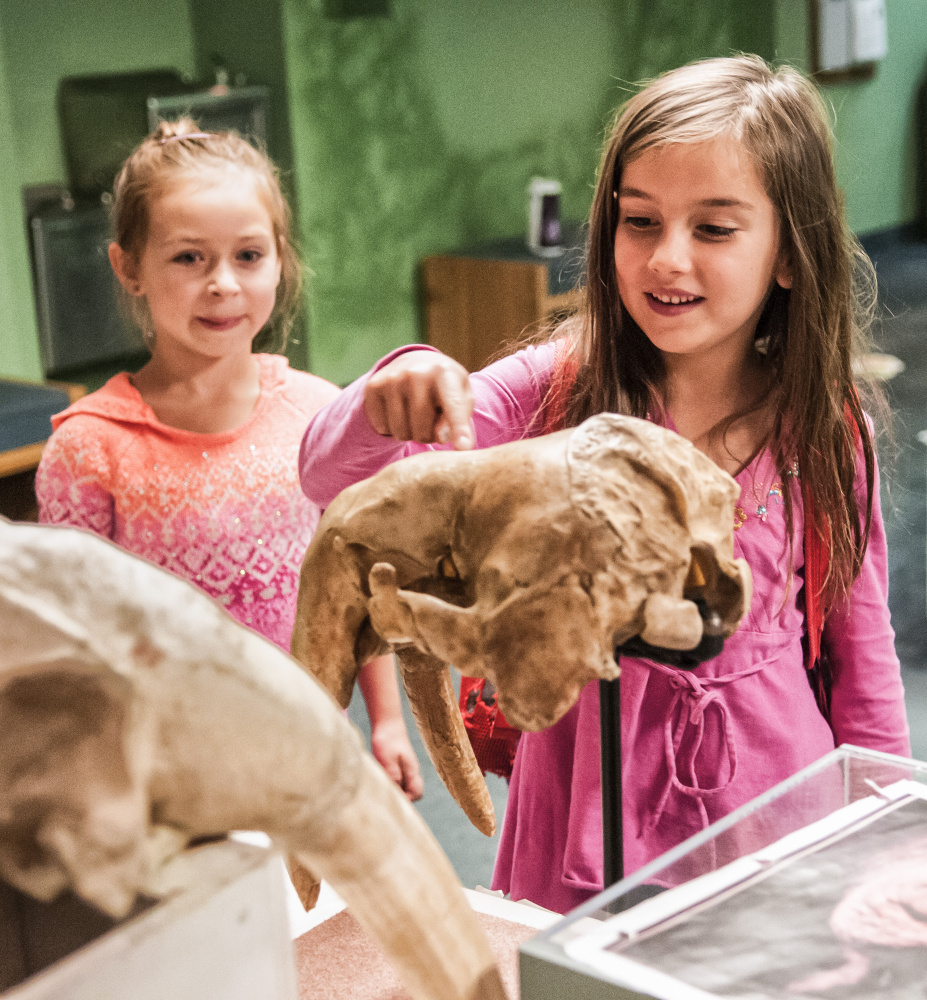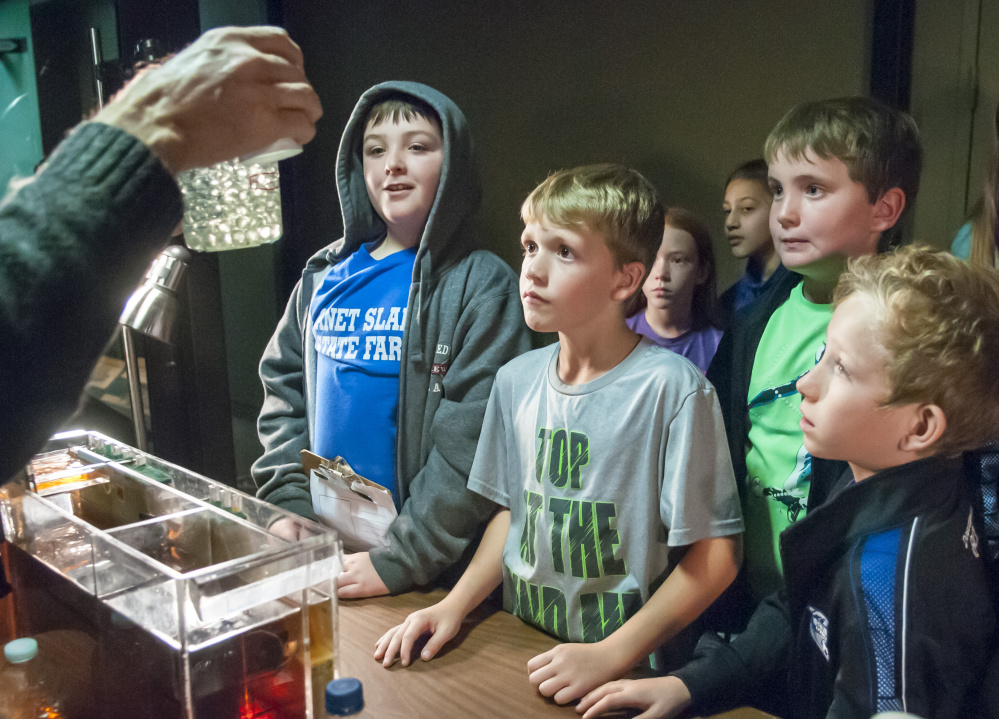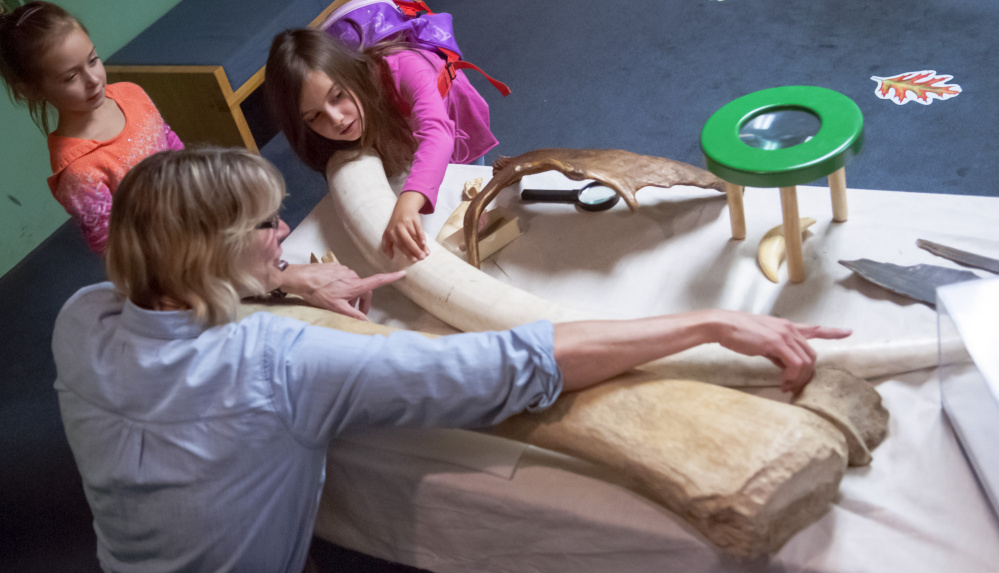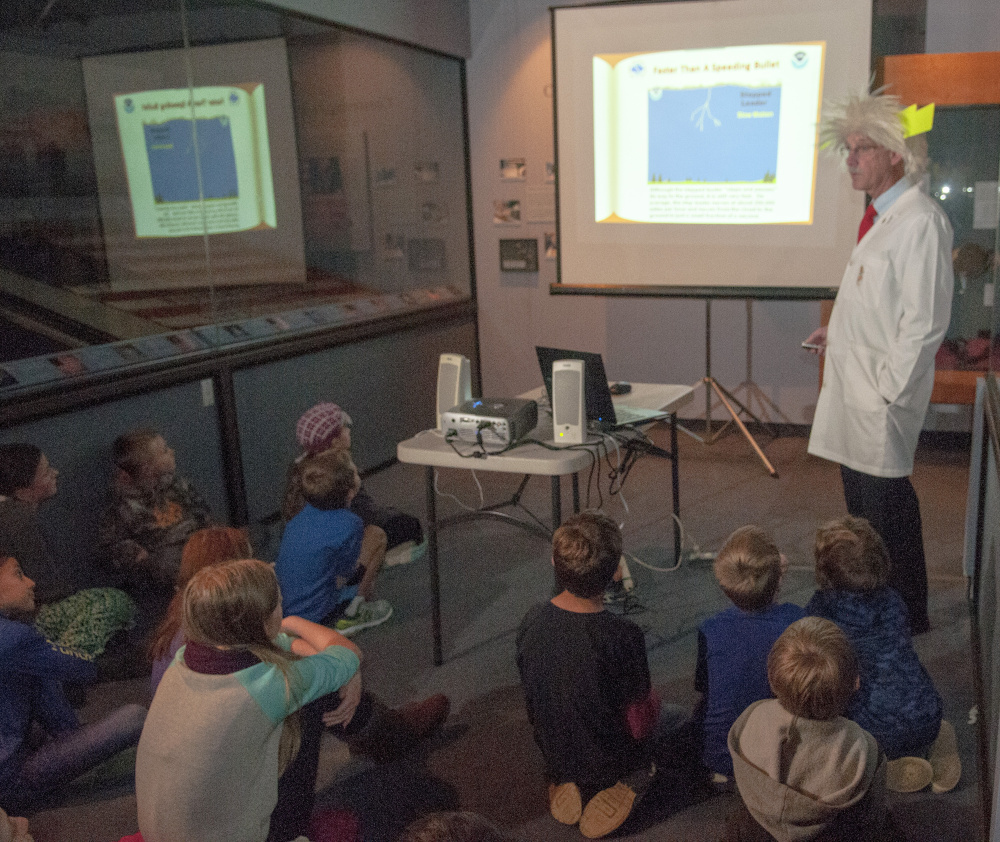AUGUSTA — Nicholas Overton and Luke Doscinski said they enjoyed the GPS scavenger hunt, while classmates Nicholas Rackliff and Levi Austin liked the typography display. Their teacher, Katie Perry, said the hands-on exhibits are what makes events such as Maine Earth Science Day so important.
The fourth- and fifth-graders from Cape Cod Hill School in New Sharon were among more than 1,000 students who visited the Maine State Museum on Tuesday in Augusta for the annual celebration of all the Earth sciences.
Students, teachers, school officials and chaperons explored various interactive exhibits from scientists from the U.S. Geological Survey, the National Weather Service and the Department of Environmental Protection, among many others. Perry said the event is an excellent supplement to all the education the students receive in the classroom.
“It’s great for them to learn about all the different sciences,” Perry said. “The museum is fabulous, and it’s free. You can’t beat that.”
Winding through the different levels of the museum, students learned about soil science, rocks and minerals, electricity and prospecting for gold. There were exhibits by the Mount Washington Observatory, the Challenger Learning Center in Bangor and the Maine Geographic Alliance.
Two of the more popular exhibits, Chief Educator Joanna Turow said, were in the museum’s lower level. The Department of Environmental Protection table had stone materials, tools and bones, including a modern elephant tusk. Paula Work, registrar and curator of science for the museum, and adjunct curator Fred Chiocki told students about how there used to be a walrus colony in Maine around 13,000 years ago, something many students were surprised to learn.
“It’s all about the value of hands on, primary material that isn’t a picture or scan, something you can touch and is tangible, and how museums are able to (provide) that for people,” Chiocki said. “We’re tucked way down here, but we’ll always give them a good story.”
Around the corner in a dimly lit part of the lower level, a man with a mustache, a white coat and spiked white hair with a lightning bolt going through it held court to group after group of interested children — and adults.
Meteorologist John Jensenius, known as Dr. Lightning, gave his presentation about lightning and lightning safety, and he fielded questions on topics including swimming during a thunderstorm and how little the rubber in a pair of shoes does to protect someone from lightning.
“Not to make a pun, but children are always interested in flashy things, and there’s not much flashier than lighting,” Jensenius said. “(Lightning) seems to be one of the least understood things, and part of our mission is to keep people safe.”
Turow said the event has features for everybody, and there were students from elementary, middle and high schools around Maine, plus a lot of homeschooled children with their mothers and fathers.
“These kids are going to be making decisions about our world that are getting really critical,” Turow said. “They’re going to be making more decisions about how the Earth is managed.”
She said she hopes studying the Earth sciences pique the students’ interests so that they’ll be able to make informed decisions in the future that will affect generations to come. There’s only so much a teacher can cover during the school day, so Maine Earth Science Day and other events add to the education children already receive.
“That’s what we try to do in museums, give them the informal education piece, and it especially helps the students who maybe don’t thrive in the classroom,” she said. “They’re meeting real, live scientists who are using the sciences every day, and you can’t usually get that in a classroom.”
In the of the museum’s lobby area, Julie Conroy stood with her sixth-grade students from Holy Cross School in South Portland. They had gone through the Earth science exhibits and rest of the museum and were preparing for their hourlong ride back to school.
Conroy said the students came to the museum in fourth grade with their history class and remember much about their visit.
“It’s a wonderful hands-on experience, and they’re actually able to see the real objects, which is way different than seeing things in a book,” she said. “Museums bring history to life, and they can start making connections by seeing things in real scale that we can’t match.”
Jason Pafundi — 621-5663
Twitter: @jasonpafundiKJ
Copy the Story Link
Send questions/comments to the editors.







Success. Please wait for the page to reload. If the page does not reload within 5 seconds, please refresh the page.
Enter your email and password to access comments.
Hi, to comment on stories you must . This profile is in addition to your subscription and website login.
Already have a commenting profile? .
Invalid username/password.
Please check your email to confirm and complete your registration.
Only subscribers are eligible to post comments. Please subscribe or login first for digital access. Here’s why.
Use the form below to reset your password. When you've submitted your account email, we will send an email with a reset code.